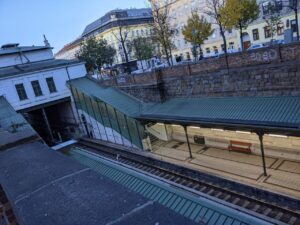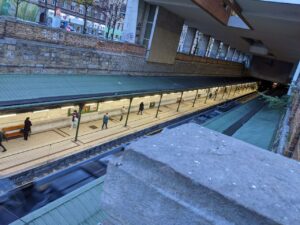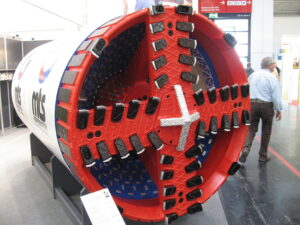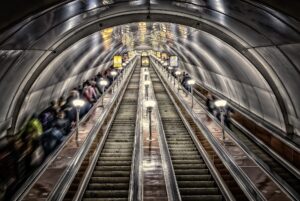No, we are not talking about the sandwich. Sorry.
In our previous blog post, we approached the subway from a historical perspective, today we approach from above and dig deep underground to find out how subway tunnels and stations can be built.
*****
There are different ways to build a subway. If you do a round in Vienna and look at different lines, you will find that this is sometimes also visually noticeable. The U6, for example, begins in Siebenhirten in an elevated position, runs till Meidling station above ground and then in places underground, partly in a lower position and at street level, to end in Floridsdorf as it began: in an elevated position. The reason for this is the part of the U6 running alongside the so-called “Gürtel” Street. This part was originally part of the old urban railway planned by Otto Wagner.
But apart from a few stations that are very atypical above ground, a subway is basically intended for the underground (even though not a single one of the Vienna subway lines is purely underground). While the original idea was to create more space for cars above ground, the desire for climate-friendliness and quality of living dominates today.
Back to the topic – how is construction going on in Vienna?
Three different types of construction are used in the construction of the subway in Vienna.
On the one hand, there is the open construction method that leads us to the Wiener Stadtgraben (anyone who has read our last post knows that there once was a city moat in, or rather, around Vienna, that could be flooded if necessary). To put it simply, the open construction works the same way it was used hundreds of years ago to build this trench:
You dig a ditch – and put the subway inside (if, by a lucky coincidence, you don’t already have a finished trench, which we had). Think of the U6 station Burggasse: dig up, put the rails in, put the subway on and off you go. Optionally, this ditch can then be “covered” above – as is the case, for example, at Vienna’s Naschmarkt.


In the course of the current work on the U2 and U5 lines, station structures such as lift shafts, ventilation and emergency exits are being built using the open construction method.
For the construction of the station tunnels, on the one hand, conventional driving according to the New Austrian Tunneling Method (NATM) is used.
This type of propulsion uses blasting or excavators. The blasting (or dredging), the removal of the rubble, the securing takes place in a cyclical procedure – and then the process starts again.
The construction of the actual tunnel section takes place with the help of a tunnel boring machine.
In contrast to conventional tunneling, the so-called continuous / mechanical tunneling takes place continuously, as the tunnel boring machine carries out the drilling and removal of debris at the same time.

The tunnel boring machine that is currently being used for the construction of Wiener Linien is 50 meters long and 6.5 meters high – and therefore significantly larger than my apartment.A huge drill head is used for the excavations, from which the demolition material is removed and the tube is secured and removed in further steps.And that at a remarkable speed of around twelve meters a day.
Obstacles to overcome
Sounds fast, but in reality things are of course more complicated than simply digging a tunnel in the ground.
In addition to all the geological challenges that make an “open-air” tunnel project exciting, there are a few other challenges in urban subway construction. For example basements, canals and buildings above, or the planning of escalators (you can find Viennas longest escalator in the station Zippererstraße (U3), with a length of 53 meters – but from an international perspective that is almost laughable. The longest escalator in the world in the subway of St. Petersburg measures 137 meters).

Elevator shafts for barrier-free access also have headache potential for architects and planners. And last but not least there are always archaeological finds to consider. In Vienna for example you can visit the Virgil Chapel on Stephansplatz, which was discovered during the construction of the subway station (fun fact: apparently this could only be entered through a hatch in the ceiling).
There is another anecdote about the construction of the Stephansplatz underground station, which sums up the difficulty of such a construction project: During the construction phase, many sensors were used to detect problems early – bummer that these sensors all sounded the alarm when the sacristan dropped something heavy in the cathedral.
****
The next stop on our trip with the subway takes us from topographical low points to architectural high points. In our next subway article we will devote ourselves to excavations and the sometimes very artistic design of the station buildings.

